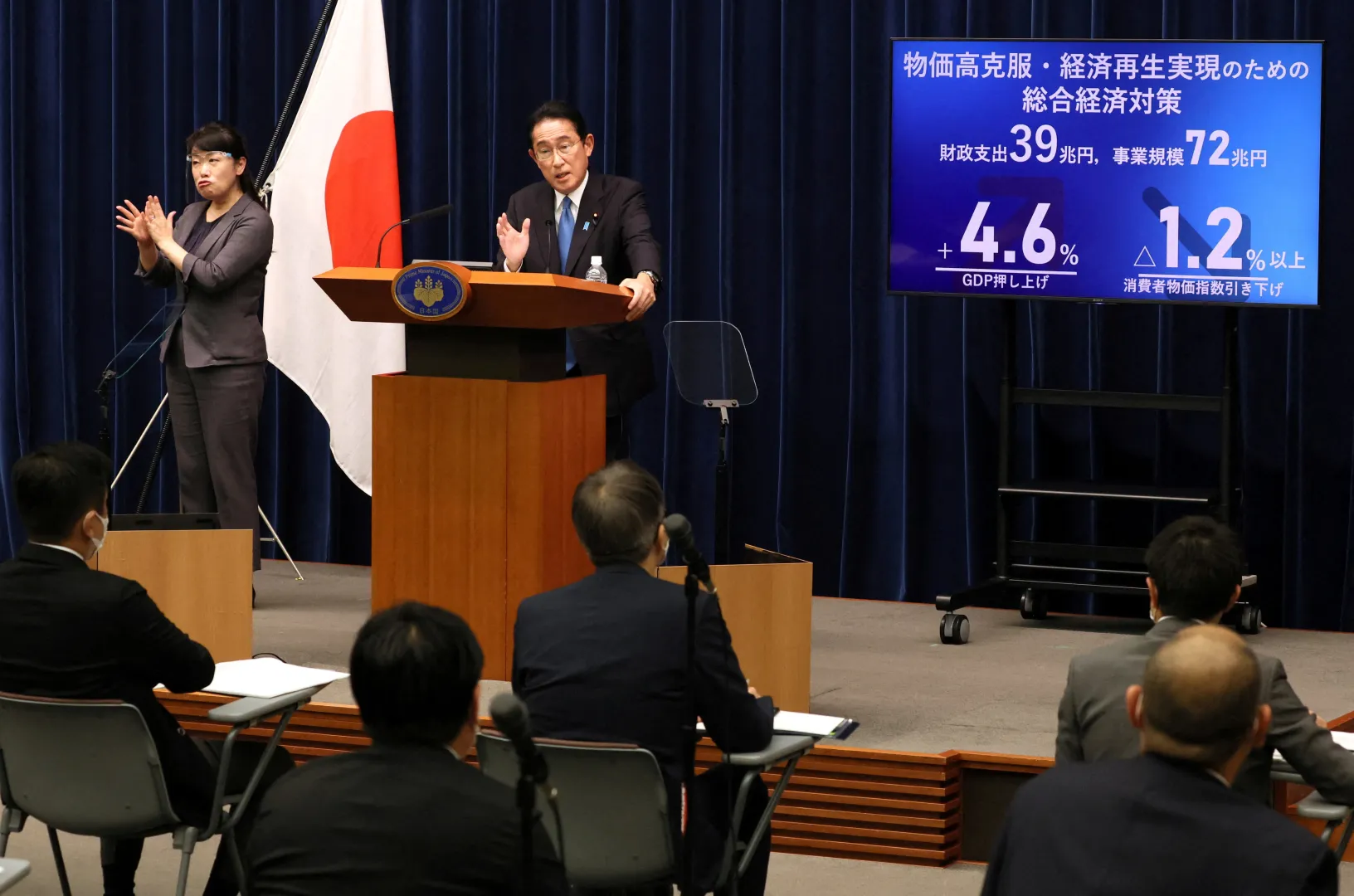New York Federal Reserve President John Williams convened an urgent meeting with major Wall Street banks this week to address growing concerns about the utilization and effectiveness of a critical short-term lending facility designed to provide emergency liquidity during periods of market stress. The high-level discussions, which brought together the central bank’s primary trading counterparties, highlight mounting anxieties about potential vulnerabilities in the financial system’s liquidity infrastructure and raise fundamental questions about whether existing monetary policy tools are functioning as intended during periods of market tension.
A New York Fed spokesperson confirmed the meeting to Reuters, explaining that “President Williams convened the New York Fed’s primary trading counterparties (primary dealers) to continue engagement on the purpose of the standing repo facility as a tool of monetary policy implementation and to solicit feedback that ensures it remains effective for rate control.” This carefully worded statement, while diplomatically phrased, signals genuine concern among Federal Reserve officials about behavioral patterns among financial institutions that could undermine the central bank’s ability to maintain stability in short-term funding markets.
Build the future you deserve. Get started with our top-tier Online courses: ACCA, HESI A2, ATI TEAS 7, HESI EXIT, NCLEX-RN, NCLEX-PN, and Financial Literacy. Let Serrari Ed guide your path to success. Enroll today.
Understanding the Standing Repo Facility’s Critical Role
The Standing Repo Facility (SRF) represents one of the Federal Reserve’s most important monetary policy implementation tools, serving as a critical backstop that allows eligible financial institutions to quickly convert high-quality securities, particularly Treasury bonds and agency mortgage-backed securities, into immediate cash during periods when market liquidity becomes constrained. This facility functions essentially as an automatic shock absorber, designed to prevent temporary liquidity shortages from cascading into broader financial instability.
Formally adopted by the Federal Reserve in July 2021 following extensive consultations with market participants and academic economists, the SRF was created specifically to address lessons learned from previous episodes of money market dysfunction, most notably the September 2019 repo market disruption that sent overnight lending rates spiking unexpectedly and forced the Fed into emergency interventions. The facility offers overnight repurchase agreements at a predetermined rate, currently set at 25 basis points above the top of the federal funds target range, providing a clear ceiling for overnight repo rates.
The mechanism operates relatively straightforwardly in theory: eligible counterparties—primarily the primary dealers that maintain direct trading relationships with the Federal Reserve—can present qualifying collateral to the New York Fed’s trading desk and receive overnight cash loans. The next business day, these transactions automatically unwind, with the borrowing institution repaying the cash plus interest and reclaiming its securities. This design ensures that firms facing temporary funding pressures can access liquidity without triggering market panic or resorting to fire sales of securities that could destabilize broader markets.
Market Liquidity Tensions Preceding the October Policy Meeting
The urgency surrounding this week’s discussions stems directly from troubling developments observed in money markets during the weeks leading up to the Federal Reserve’s October policy meeting. Multiple indicators simultaneously flashed warning signals about tightening liquidity conditions, creating a constellation of concerning developments that prompted heightened vigilance among Fed officials monitoring financial stability.
Rising money market rates across various tenors indicated that financial institutions were experiencing increasing difficulty securing short-term funding at rates consistent with the Fed’s policy intentions. The Secured Overnight Financing Rate (SOFR), which has replaced LIBOR as the primary benchmark for short-term interest rates, exhibited unusual volatility and upward pressure that suggested supply-demand imbalances in the repo market. Similarly, the federal funds effective rate—the actual rate at which banks lend reserves to each other overnight—demonstrated an upward drift within its target range, gravitating toward the upper boundary rather than hovering near the midpoint as typically occurs during periods of ample liquidity.
Most tellingly, usage of the Standing Repo Facility itself began increasing during late October, with eligible institutions tapping the facility for overnight funding in amounts that, while not unprecedented, represented a notable departure from the near-zero utilization that had characterized most of the facility’s existence since its 2021 creation. This uptick in SRF usage provided tangible evidence that at least some market participants were experiencing genuine funding pressures requiring central bank intervention.
These concurrent developments collectively painted a picture of money markets operating under greater stress than Federal Reserve officials had anticipated given the current monetary policy stance and the system’s overall reserve levels. The convergence of multiple liquidity stress indicators naturally prompted questions about whether the Fed’s policy implementation framework was functioning optimally or whether adjustments might be necessary to ensure continued market stability.
The Puzzling Reluctance to Utilize Available Fed Support
Perhaps the most perplexing aspect of the October liquidity episode, and a central focus of this week’s discussions, centers on the apparent reluctance of many financial institutions to utilize the Standing Repo Facility even when market conditions suggested doing so would be economically rational. Fed officials have expressed genuine bewilderment that numerous firms chose to borrow funds in private markets at interest rates measurably higher than the rate offered through the SRF, seemingly accepting unnecessarily expensive funding rather than accessing the cheaper alternative provided by the central bank.
This behavioral paradox raises fundamental questions about the incentives, constraints, and decision-making processes that shape how financial institutions manage their short-term funding needs during periods of stress. Several potential explanations have been proposed by market observers and monetary policy analysts attempting to understand this seemingly irrational behavior.
Stigma concerns represent perhaps the most frequently cited explanation. Financial institutions may fear that utilizing Federal Reserve emergency facilities could be interpreted by competitors, counterparties, credit rating agencies, or regulators as signaling financial weakness or inadequate liquidity management. This stigma effect has plagued central bank lending facilities throughout history—banks often prefer paying premium rates for private market funding rather than risk the reputational damage they perceive might accompany accessing central bank support, even when such support is explicitly designed for routine use rather than crisis intervention.
Operational complexities and technological constraints could also play significant roles. Accessing the SRF requires firms to have appropriate systems, procedures, and trained personnel in place to execute transactions through the New York Fed’s trading infrastructure. Institutions that have never previously used the facility may lack the operational readiness to do so quickly when funding needs arise unexpectedly. Additionally, the specific collateral eligibility requirements and operational timing constraints associated with SRF transactions may not align perfectly with how firms manage their securities portfolios and funding operations in real-time market conditions.
Regulatory considerations add another layer of complexity. Post-crisis banking regulations, particularly liquidity coverage ratio requirements and various stress testing frameworks, create incentives for banks to maintain substantial high-quality liquid asset buffers. Tapping the SRF might affect how these regulatory metrics are calculated or reported, potentially creating complications that firms prefer to avoid even if it means paying marginally higher funding costs in private markets.
Roberto Perli’s Public Encouragement and Policy Implications
Roberto Perli, who holds the position of head of the Federal Reserve Bank of New York’s Markets Group and bears direct responsibility for implementing monetary policy operations, addressed these concerns in remarks delivered on Wednesday during the Fed’s annual Treasury market conference. His comments represented a notably public effort to dispel any stigma surrounding SRF usage and encourage firms to utilize the facility as intended.
“Firms needing to use the central bank’s standing repo facility should tap it when needed,” Perli stated explicitly, adding that “large-scale usage would not be problematic” from the Federal Reserve’s perspective. This language was carefully chosen to convey several important messages simultaneously: that SRF usage represents completely normal behavior rather than a distress signal, that the Fed has designed the facility to accommodate substantial volume without operational difficulties, and that central bank officials actively want firms to use the tool when market conditions warrant doing so.
Perli’s public encouragement reflects a broader policy challenge confronting central banks globally: designing standing facilities that market participants will actually use when needed rather than tools that remain theoretically available but practically dormant due to behavioral barriers. The European Central Bank has grappled with similar issues regarding its various liquidity facilities, while the Bank of England has undertaken extensive consultations with market participants to ensure its Sterling Monetary Framework facilities achieve appropriate utilization patterns.
The Federal Reserve’s experience with its discount window—the traditional emergency lending facility for commercial banks—provides a cautionary historical precedent. Despite repeated efforts by Fed officials to destigmatize discount window borrowing and encourage routine usage, banks have consistently demonstrated extreme reluctance to access the facility except during the most severe crises, when the alternative might be institutional failure. This persistent stigma has limited the discount window’s effectiveness as a routine monetary policy tool and raised questions about whether its existence actually prevents the severe disruptions it was designed to address.
The Treasury Market Conference Context
The timing and venue of this week’s discussions carry additional significance. The meeting occurred on the sidelines of the Federal Reserve’s annual conference on the U.S. Treasury securities market, a gathering that brings together senior officials from the Fed, Treasury Department, primary dealers, institutional investors, and academic experts to discuss structural issues affecting the world’s largest and most important securities market.
This conference has evolved into an increasingly important forum for addressing fundamental questions about Treasury market resilience, structure, and functioning. Recent years have witnessed several episodes of severe Treasury market stress—including the March 2020 pandemic-induced dysfunction that required unprecedented Fed intervention and the October 2024 “flash rally” that saw Treasury yields move violently without clear fundamental catalysts—prompting intensive examination of potential structural vulnerabilities and whether regulatory or market structure reforms might be necessary.
Convening the primary dealer meeting alongside this broader conference allowed Williams and other Fed officials to engage with key market participants in a setting where sophisticated discussions about market structure, liquidity dynamics, and monetary policy implementation could proceed with appropriate technical depth. The overlapping participation of primary dealers in both the SRF discussions and the broader Treasury market conference also enabled more comprehensive conversations about how various aspects of fixed income market functioning interconnect and influence each other.
One decision can change your entire career. Take that step with our Online courses in ACCA, HESI A2, ATI TEAS 7, HESI EXIT, NCLEX-RN, NCLEX-PN, and Financial Literacy. Join Serrari Ed and start building your brighter future today.
Primary Dealers and Their Special Relationship with the Fed
The institutions participating in this week’s meeting—the New York Fed’s primary dealers—occupy a unique position in the U.S. financial system. These firms, currently numbering 25, maintain special trading relationships with the Federal Reserve and assume certain obligations in exchange for privileged access to Fed operations. Primary dealers must participate meaningfully in Treasury auctions, providing a reliable source of demand that supports the government’s financing operations. They serve as the Fed’s counterparties for open market operations, including the large-scale asset purchases and portfolio management operations through which monetary policy is implemented.
Major global financial institutions including J.P. Morgan, Goldman Sachs, Citigroup, Bank of America, and foreign-owned firms like Barclays and Deutsche Bank comprise the primary dealer network. These institutions’ perspectives carry particular weight with Fed policymakers because their trading activities and client relationships provide granular real-time information about market conditions that aggregate data cannot fully capture.
The fact that Williams personally convened this meeting signals the issue’s importance within the Federal Reserve system. The New York Fed President’s time is allocated carefully among numerous competing demands; his direct involvement indicates that senior leadership views SRF utilization patterns as a matter requiring high-level attention rather than merely a technical operational concern that staff could address independently.
Broader Implications for Monetary Policy Implementation
The discussions surrounding SRF usage connect to larger questions about the Federal Reserve’s overall framework for monetary policy implementation in an environment of ample reserves. Since 2008, the Fed has operated what it terms an “ample reserves regime,” maintaining reserve levels well above those minimally necessary for day-to-day payment system functioning. This approach differs fundamentally from the pre-crisis “scarce reserves” framework, where the Fed actively managed reserve quantities to achieve its interest rate targets.
The ample reserves regime theoretically simplifies monetary policy implementation by ensuring that banks always have sufficient reserves, reducing the need for frequent Fed interventions to manage short-term rate volatility. However, periodic episodes of money market stress despite ample reserves suggest that quantity alone may not guarantee smooth market functioning—the distribution of reserves across institutions, behavioral factors affecting their willingness to lend, regulatory constraints on balance sheet usage, and other frictions can still generate funding pressures even when aggregate liquidity appears abundant.
The Standing Repo Facility was designed specifically to address residual rate volatility in an ample reserves environment, providing an automatic stabilizer that should prevent temporary imbalances from pushing rates above the Fed’s intended ceiling. If firms prove reluctant to use this facility when economically rational to do so, however, it cannot fulfill this stabilization function effectively, potentially requiring the Fed to intervene through other means or accept greater rate volatility than desired.
International Context and Cross-Border Considerations
The liquidity dynamics affecting U.S. money markets operate within an increasingly interconnected global financial system where cross-border flows, foreign exchange hedging activities, and international regulatory frameworks all influence domestic funding conditions. Many primary dealers and other significant participants in U.S. repo markets are foreign banking organizations whose operations span multiple jurisdictions and regulatory regimes.
International coordination among central banks on liquidity provision has become increasingly important, as evidenced by the standing dollar liquidity swap lines the Federal Reserve maintains with the European Central Bank, Bank of Japan, Bank of England, Swiss National Bank, and Bank of Canada. These arrangements allow foreign central banks to provide dollar liquidity to institutions in their jurisdictions during periods of stress, complementing the Fed’s domestic facilities.
The global reach of dollar funding markets means that liquidity pressures can originate from developments far removed from U.S. shores, transmitted through international banking organizations’ global balance sheets and the complex web of cross-currency and cross-border transactions that characterize modern finance. Understanding and addressing money market dynamics therefore requires the Federal Reserve to maintain sophisticated awareness of global financial conditions alongside its domestic monitoring.
Looking Forward: Potential Policy Adjustments
The outcomes of this week’s discussions could influence several aspects of how the Federal Reserve designs and communicates about its liquidity facilities going forward. Possible adjustments might include enhanced communication efforts to further destigmatize facility usage, operational improvements to reduce frictions associated with accessing the SRF, modifications to pricing or collateral eligibility that might make the facility more attractive to potential users, or more fundamental structural changes to how the Fed provides backstop liquidity.
Some market observers have suggested that the Fed might consider making SRF access even more automatic, potentially through pre-positioned arrangements that would allow firms to draw on the facility with minimal operational friction during periods of stress. Others have proposed adjusting the spread between the SRF rate and the top of the federal funds target range, though this carries risks of interfering with normal market functioning if set inappropriately.
The Federal Reserve has consistently emphasized its commitment to learning from market functioning episodes and adapting its operational frameworks accordingly. The October liquidity pressures and subsequent firm-level discussions represent exactly the type of real-world stress test that can reveal gaps between theoretical facility design and practical effectiveness, providing invaluable information for policymakers seeking to optimize monetary policy implementation.
Conclusion: Balancing Market Function and Central Bank Support
As financial markets continue evolving in response to regulatory changes, technological innovation, and shifting participant behavior, central banks face the ongoing challenge of designing liquidity provision mechanisms that effectively support market functioning without creating moral hazard or suppressing the price signals that discipline risk-taking. The Federal Reserve’s engagement with primary dealers about Standing Repo Facility usage reflects this delicate balancing act and the importance of maintaining open dialogue between policymakers and market participants.
The coming months will reveal whether the encouragement from Perli and the discussions convened by Williams succeed in promoting more routine SRF usage during periods of funding pressure, or whether behavioral barriers prove more persistent than Fed officials hope. The answers will carry implications not only for U.S. money market stability but for broader questions about central bank facility design and the effectiveness of monetary policy implementation frameworks in modern financial systems.
For now, the fact that senior Federal Reserve officials are actively engaging with the issue, soliciting market feedback, and publicly encouraging facility usage demonstrates the central bank’s commitment to ensuring its policy tools function as intended. In an era where financial stability increasingly depends on market participants’ confidence in central bank backstops, this kind of proactive communication and engagement may prove as important as the facilities’ technical design features themselves.
Ready to take your career to the next level? Join our Online courses: ACCA, HESI A2, ATI TEAS 7 , HESI EXIT , NCLEX – RN and NCLEX – PN, Financial Literacy!🌟 Dive into a world of opportunities and empower yourself for success. Explore more at Serrari Ed and start your exciting journey today! ✨
Track GDP, Inflation and Central Bank rates for top African markets with Serrari’s comparator tool.
See today’s Treasury bonds and Money market funds movement across financial service providers in Kenya, using Serrari’s comparator tools.
Photo source: Google
By: Montel Kamau
Serrari Financial Analyst
17th November, 2025
Article, Financial and News Disclaimer
The Value of a Financial Advisor
While this article offers valuable insights, it is essential to recognize that personal finance can be highly complex and unique to each individual. A financial advisor provides professional expertise and personalized guidance to help you make well-informed decisions tailored to your specific circumstances and goals.
Beyond offering knowledge, a financial advisor serves as a trusted partner to help you stay disciplined, avoid common pitfalls, and remain focused on your long-term objectives. Their perspective and experience can complement your own efforts, enhancing your financial well-being and ensuring a more confident approach to managing your finances.
Disclaimer: This article is for informational purposes only and does not constitute financial advice. Readers are encouraged to consult a licensed financial advisor to obtain guidance specific to their financial situation.
Article and News Disclaimer
The information provided on www.serrarigroup.com is for general informational purposes only. While we strive to keep the information up to date and accurate, we make no representations or warranties of any kind, express or implied, about the completeness, accuracy, reliability, suitability, or availability with respect to the website or the information, products, services, or related graphics contained on the website for any purpose. Any reliance you place on such information is therefore strictly at your own risk.
www.serrarigroup.com is not responsible for any errors or omissions, or for the results obtained from the use of this information. All information on the website is provided on an as-is basis, with no guarantee of completeness, accuracy, timeliness, or of the results obtained from the use of this information, and without warranty of any kind, express or implied, including but not limited to warranties of performance, merchantability, and fitness for a particular purpose.
In no event will www.serrarigroup.com be liable to you or anyone else for any decision made or action taken in reliance on the information provided on the website or for any consequential, special, or similar damages, even if advised of the possibility of such damages.
The articles, news, and information presented on www.serrarigroup.com reflect the opinions of the respective authors and contributors and do not necessarily represent the views of the website or its management. Any views or opinions expressed are solely those of the individual authors and do not represent the website's views or opinions as a whole.
The content on www.serrarigroup.com may include links to external websites, which are provided for convenience and informational purposes only. We have no control over the nature, content, and availability of those sites. The inclusion of any links does not necessarily imply a recommendation or endorsement of the views expressed within them.
Every effort is made to keep the website up and running smoothly. However, www.serrarigroup.com takes no responsibility for, and will not be liable for, the website being temporarily unavailable due to technical issues beyond our control.
Please note that laws, regulations, and information can change rapidly, and we advise you to conduct further research and seek professional advice when necessary.
By using www.serrarigroup.com, you agree to this disclaimer and its terms. If you do not agree with this disclaimer, please do not use the website.
www.serrarigroup.com, reserves the right to update, modify, or remove any part of this disclaimer without prior notice. It is your responsibility to review this disclaimer periodically for changes.
Serrari Group 2025












